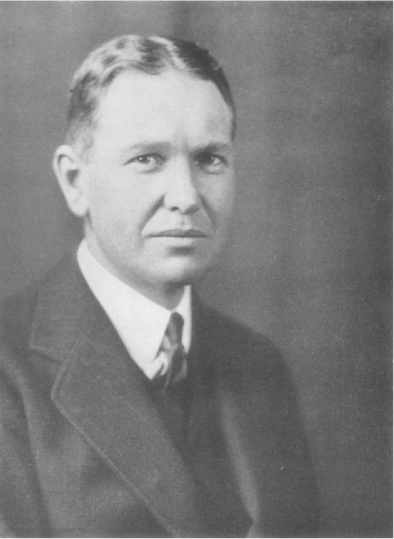1 Fig. 1.1 Francis Weld Peabody. Used with permission from J Clin Invest. 1927 December; 5(1): 1.b1–6. While lecturing at the Harvard Medical School in the fall of 1925, Frances Weld Peabody first made his memorable remark that “the secret of the care of the patient is in caring for the patient.”1 At the time, there was growing concern that rapid increases in scientific knowledge and emphasis on the pathophysiology of disease were consuming the attention of those studying medicine. Peabody felt the pendulum had swung too far toward medicine as a science than as an art, and his assertion that physicians should spend as much time caring for patients as attempting to understand what ails them secured Peabody a spot in American medical education history. Two years later, his remarks were published in JAMA: What is spoken of as a ‘clinical picture’ is not just a photograph of a sick man in bed; it is an impressionistic painting of the patient surrounded by his home, his work, his relations, his friends, his joys, sorrows, hopes, and fears.1 Peabody, 1927 Although such a philosophy should be asserted by physicians daily in modern medical practice, empathy alone will unfortunately not protect our patients from undesirable healthcare events or untoward surgical outcomes. The surgeon cannot control predictably and reliably the multitude of variables involved in the care of a surgical patient. Surgical complications inevitably occur and do so in many varieties and with differing degrees of severity. Untoward outcomes stem from events that occur intraoperatively or postoperatively and can occur because of an undesirable patient characteristic (e.g., tobacco abuse, diabetes, malnutrition, or willful neglect), or because of an undesirable surgeon characteristic (e.g., technical error or poor judgment). Unlike the airline industry, in which a successful flight can be defined as one that takes offand lands uneventfully without loss of life or limb, surgical complications occur along a greater spectrum of possible outcomes. This is especially true in plastic surgery, where the success of the outcome is not simply a matter of whether the flap lives or dies or whether the wound heals or does not; rather, it is a complex interplay of actual results, intended results, and expected results. At no time is this more important than when the surgeon’s subject is the human face, for an undesirable outcome from an operation on the face is difficult to conceal in contemporary society and harbors unique significance: In civilized man, the face alone remains unclothed and exposed. An injury resulting in distortion of the features thus sets the unfortunate individual apart in a highly organized society where a premium is placed upon beauty and facial symmetry. Because disfigurement of the face becomes a serious social handicap, the surgical treatment of facial injuries is of special significance, as it serves to restore the inner feelings of happiness and well-being in addition to the outer appearance and function.2 Varstad Kazanjian and John Converse, 1949 This text was conceived and crafted to help surgeons help their patients, so it is devoted to the prevention, identification, and management of unfavorable outcomes in contemporary facial plastic surgery. Plastic surgeons and patients often interpret surgical results differently, and an undesirable result can be real or perceived. What the surgeon sees as a technical victory, the patient can easily view as unsightly. To complicate matters further, an undesirable outcome for one patient might be overlooked by another or even lauded by yet another. Despite such variability, there is a consistent emotion associated with poor surgical outcomes that all surgeons will inevitably experience during their careers: the sinking feeling that always accompanies the appearance of an undesirable result, the associated loss of patient confidence, and the uncomfortable torque that ensues on the patient-doctor relationship. For the purposes of this text, it is necessary to understand the definition of a complication in facial plastic surgery. Because of the aesthetic nature of the specialty, the familiar definition has been expanded to include patient dissatisfaction as a complication. Therefore, a complication can be defined as an undesirable outcome that occurs because of the presence of one or more of four conditions: (1) inappropriate surgical technique, (2) inappropriate surgical judgment, (3) inappropriate recovery, and (4) inappropriate patient expectations. Inappropriate technique includes both equipment failure and doing the advisable procedure but performing it incorrectly. Inappropriate judgment includes both poor patient selection and doing an ill-advised procedure but performing it correctly. Inappropriate surgical recovery includes any aberration in wound healing or other complication that arises in the recovery period, and inappropriate patient expectations occur when the surgical result falls significantly short of the outcome the patient desired. Because this latter condition is extremely important in aesthetic surgery, it is therefore included with the more traditional types of surgical complications, because any
Facial Plastic Surgery Complications: An Overview
 What Is a Complication?
What Is a Complication?
![]()
Stay updated, free articles. Join our Telegram channel

Full access? Get Clinical Tree





